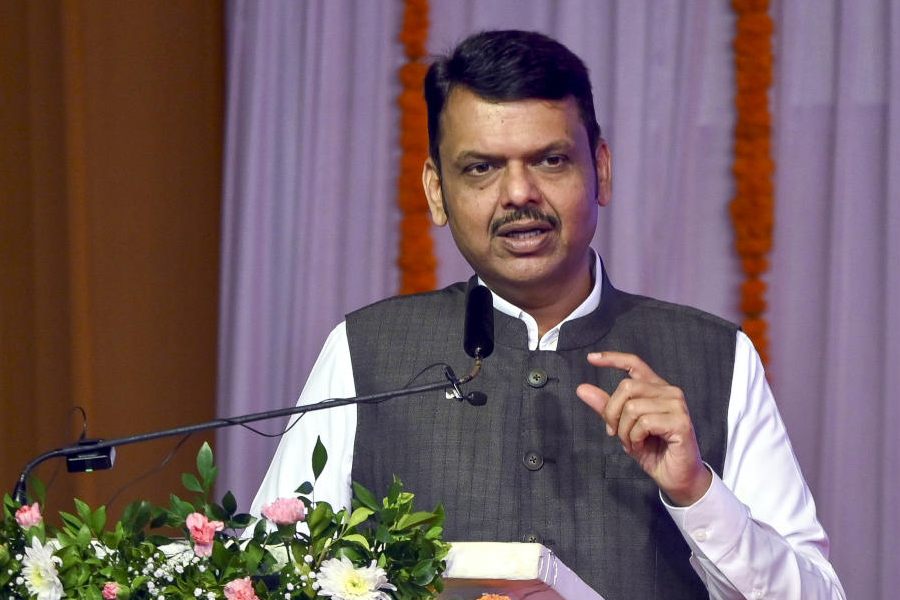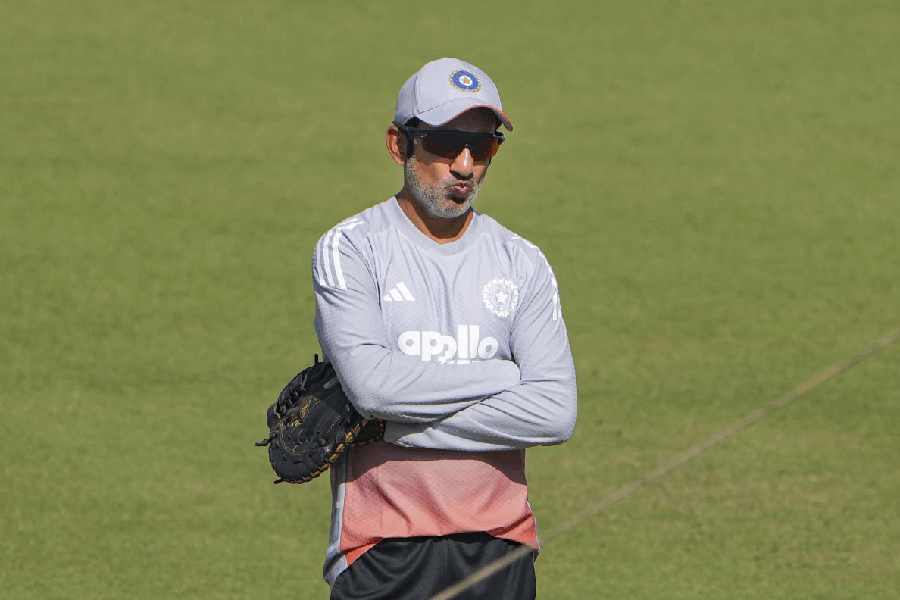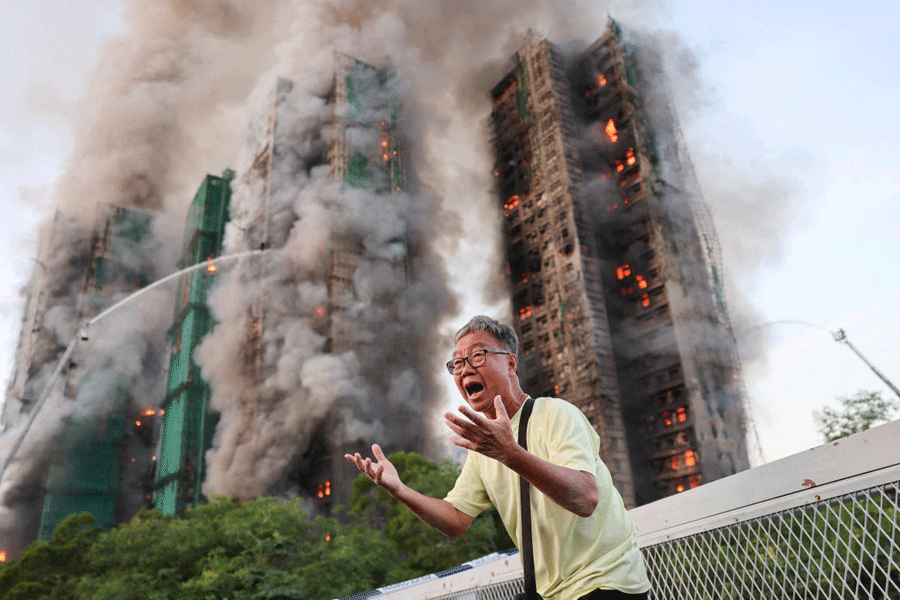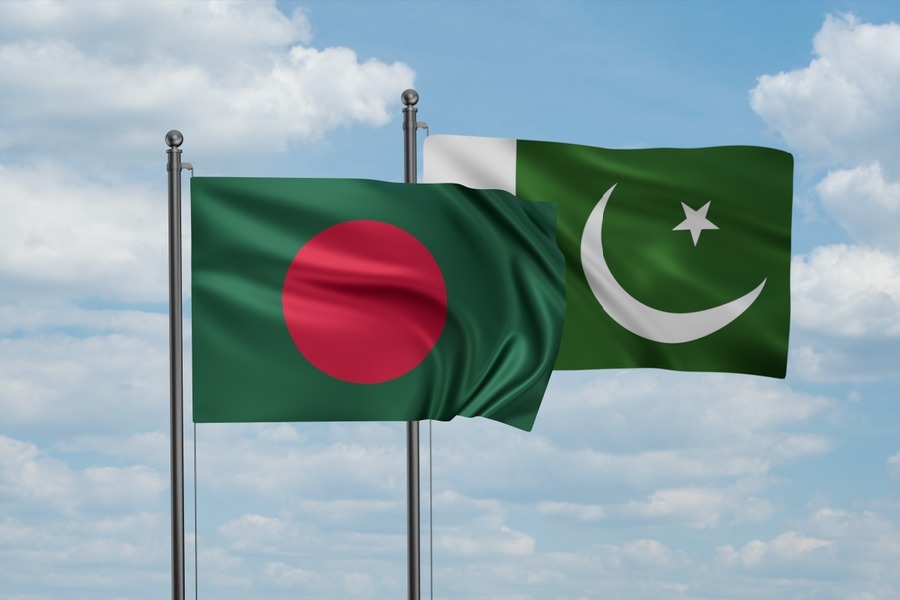 |
In the 19th century, visual representations of the country and of Indian life through various art forms, including the increasingly popular camera, acquired a unique purchase. Some, such as those inspired by artists of the Company School, the work of the Daniells, William Hodges, Balthazar Solvyns and so on spilt over from the 18th century; later, the photography of men like Samuel Bourne, Linnaeus Tripe and Raja Deen Dayal were encouraged by the British while other visual specialists were self-consciously ‘home-grown’, such as the Kalighat patua or chitrakar artists of Calcutta. A history over the last 200 years of the evolution of the Kalighat patachitras, a series of vibrant images, and the individual image or pat could lead to an inspired (some might say quirky) understanding of aspects of the Bengali psyche. It is at times an extremely suggestive visual genre, weaving narratives with a certain unerring painterly ease.
Whether it is a courtesan decking herself or Bhima killing Kichika, it is the eyes that become the point of focus in this school of skilful, popular art. For instance, in the much-reproduced image of a not quite rotund Ganesha, the elephant god has amazingly ‘human eyes’; they beckon the viewer, encouraging a range of emotions — a feature of many Kalighat paintings of the 19th century. It was after the construction of the new Kalighat temple in 1809 with its traditional athchala (eight-roofed) design that the serious migration of patuas, painters on hand-made paper scrolls or patachitras, to the region began. The art historian, Pratapaditya Pal (1990), feels that though the art form took off after the first decade of the century, patuas and kumors (potters) must have been living in and around the area for much longer. They were essential prostheses for pilgrims and the devout, providing imagery and votive vessels for worship, both at the site and within homes.
Pal adds that though religious iconography was the raison d’etre of this genre of painting, the patuas used an ‘imaginative power’ rarely seen in other artistic traditions of the country. He focuses on two early scrolls representing Hanuman and Jatayu where both are dealt with sympathetically: rather than stress the failure of the aged bird to prevent Ravana from abducting Sita, Jatayu is portrayed as a ‘hero of cosmic proportions’. A huge Hanuman clasps his outsize heart within which sit Rama and Sita. He looks into the middle distance, eyebrows arched, eyes thoughtful. Pal wonders whether this imagery was borrowed from the ‘Sacred Heart’ representations of Christ. If not, one would add, it meant that the artist had a fine — if somewhat fanciful — understanding of anatomy.
As expected, the art form appealed to certain sections of the rulers; among them, interestingly, was the staff of missionary schools — where it is possible that the explicit, multi-hued — if not bawdy — images may have been used by them as effective counterpoints in the “civilizing” role of puritanical Christianity. Travellers and tourists in search of the unusual souvenir also honed in on these as did serious aficionados, sometimes endowing their collections to institutions. Thus, today, the Victoria Memorial Hall, Calcutta, has a small though significant holding, while London’s Victoria and Albert Museum has the largest collection, owning over 600 large water colours, hand-coloured lithographs and line drawings as well as almost 300 postcard-size images.
Among the better known collectors whose acquisitions are with the Museum were Rudyard Kipling’s father, John Lockwood, a teacher and a sculptor based in Bombay and Lahore, and former ICS officer, W.G. Archer, who became keeper of the Indian section of the V&A in 1949. In collaboration with established Santiniketan-based painter Mukul Dey — a serious collector of Indian art — Archer was able to enhance the museum’s collection. Significantly, as Suhasini Sinha, the curator of the joint VMH and V&A’s 2010-2012 touring exhibition of the paintings points out in the accompanying catalogue, Kalighat Paintings edited by her and C. Panda, the then curator of VMH, Dey was one of the first artists to pay serious attention to this genre; in 1932, he lamented that with the arrival of the printing press and of lithography, “[T]hese pictures have now entirely vanished. The artist craftsmen are nearly all dead and their children have taken up other business.” Museums and art collections, he added, have become “their last asylum”.
Dey might have had a change of heart had he been alive today: as the analysis of Kalam Patua by Jyotindra Jain in the catalogue and the recent work of the sociologist Roma Chatterji (Speaking with Pictures) show, the vibrant folk form has had a fresh lease of life through the work of modern day patuas or chitrakars. Although, quite often, most contemporary pats lack the finesse of their predecessors where images were often created by a strong, single painted black line, they play, as Chatterji says, an important role in visually inscribing significant, non-religious events in the viewers’ minds, such as those around 9/11.
At a time when the patuas started out, they had only a selection of natural pigments and dyes to work with: red from the crushed leaf of the teak or segun, blue from the brilliant-hued though common aparajita flower, yellow from the turmeric or haldi root and so on. In their informative essay “Material and techniques of Kalighat paintings”, Michael J. Wheeler and Lucia Burgio point out that detailed examination of a couple of images showed preliminary tracings in pencil that were then filled in with colour. Often, production of several images in a day was the outcome of these ateliers, with the various tasks being shared out among a number of artists under the overall supervision of the master artist. In time, particularly between the 1840s-60s, a few adopted lithography to produce the lines of the main images.
Proximity to the Kalighat temple meant that religious themes dominated the initial years with many renderings of the terrifying Kali, Shiva on his favourite bull, Nandi, Durga as Mahishasuramardini, Vishnu sleeping on the serpent, Ananta, Narasimha and an entire range of paintings dealing with the life of the much-loved Krishna. Most of these would have appealed to a devout audience, the several different poses catered to varied sensibilities. Of greater interest for a non-religious, discerning audience are those categorized in the catalogue as ‘Social Commentaries, Proverbs and Animals’. A charming one of the shial raja — the jackal king of the jungle brings alive smiling jackals while that of the ‘Bangali babu’ lampoons the life of the foppish Calcutta dandy with his Western-style closed shoes and ‘Prince Albert’ hairstyle; in other pats, he plays the sitar or indulges two yapping lap dogs and so on. Women are represented as goddesses, wives or courtesans and it was not unusual to depict them in positions of dominance — though of course, the reality may have been quite different. A brightly-painted pat of a buxom woman — with the sari arranged in a manner that outlines her ample breasts — shows her leading her lover, depicted as a sheep, on a string. In another, she holds a peacock. While both women drape their saris in the conventional style, the former wears a blouse though the latter does not. The images indicate sensitivity to changing dress codes as, by this time, the 1870s, the sari-blouse had been introduced.
The ambiguous position of women in a changing society is best exemplified in the over a dozen evocative individual pats that narrativized what came to be known as the Tarakeshwar Affair. An unchaste wife — Elokeshi — is beheaded by her husband Nabin when he gets to know of her affair with the Mahant (high priest) of Taraknath temple near Calcutta. Both Nabin and the Mahant are put on trial and patuas competed with an excited media and a popular theatre to represent the entire affair. In the final image, the Mahant waters plants in the prison garden, overseen by a British official who towers over him. This larger-than-life representation of the white man symbolizes the latter’s power in a skewed racial context, enabling the viewer to internalize visually the ruler-subject relationship. Clearly, patuas used artistic license to amuse, entertain, inform and indeed, on occasion, remind a subject people of their place in an unequal relationship. More than many other visual practitioners, the Kalighat artists were able to cock a snook at Bengali society; on occasion, at a time of considerable flux, they even drew satirical attention to the complexities of the colonial experience.











